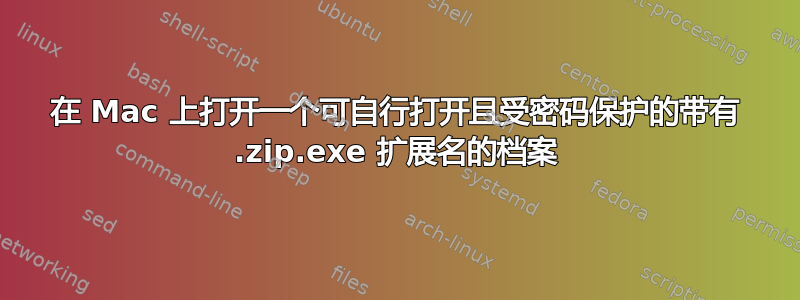
我正在尝试打开受密码保护的文件:
unzip -v -P password123 filename.zip.exe
我得到的输出是:
Archive: filename.zip.exe End-of-central-directory signature not found. Either this file is not a zipfile, or it constitutes one disk of a multi-part archive. In the latter case the central directory and zipfile comment will be found on the last disk(s) of this archive. unzip: cannot find zipfile directory in one of filename.zip.exe or filename.zip.exe.zip, and cannot find filename.zip.exe.ZIP, period.
- 有想法我该如何调试这个吗?
- 有没有办法检查文件是否已损坏?(该文件已被移动多次)
- 我可以在哪里下载示例 .exe.zip 文件来测试是否通常可以从我的笔记本电脑上打开它们?
答案1
据我所知,所有自解压 zip 文件的工作方式都是简单地将 zip 文件附加到可执行文件(处理解压)的末尾。程序unzip知道这一切,应该能够解压它。
鉴于您已经尝试过unzip并且没有找到 zip 有效负载,这表明发生了其他事情。
您可以尝试运行7z l filename.zip.exe看看是否能找到 zip 数据。
接下来看看file命令认为您的filename.zip.exe文件实际上是什么。
file filename.zip.exe
这应该会将其报告为某种形式的可执行文件。我对 Windows 自解压 zip 文件运行了该命令,得到了以下结果
$ file test.exe
test.exe: PE32 executable (GUI) Intel 80386, for MS Windows
如果显示你确实有一个可执行文件,下一步就是查看其中是否嵌入了任何 zip 文件数据。为此,请下载邮编详情然后运行
perl zipdetails -v --scan filename.zip.exe
如果找到 zip 数据,它将输出大量有关 zip 文件的文本。如果它输出一条消息说它不是 zip 文件,则说明您没有自解压 zip 文件,或者它使用另一种技术将 zip 文件嵌入可执行文件中。
答案2
在原始问题中的上述错误消息中,我使用 MacBook 打开文件。我借了一台 Windows 笔记本电脑并尝试从那里打开它。在 Windows 上,一切都很简单直接。感谢您的所有建议!


